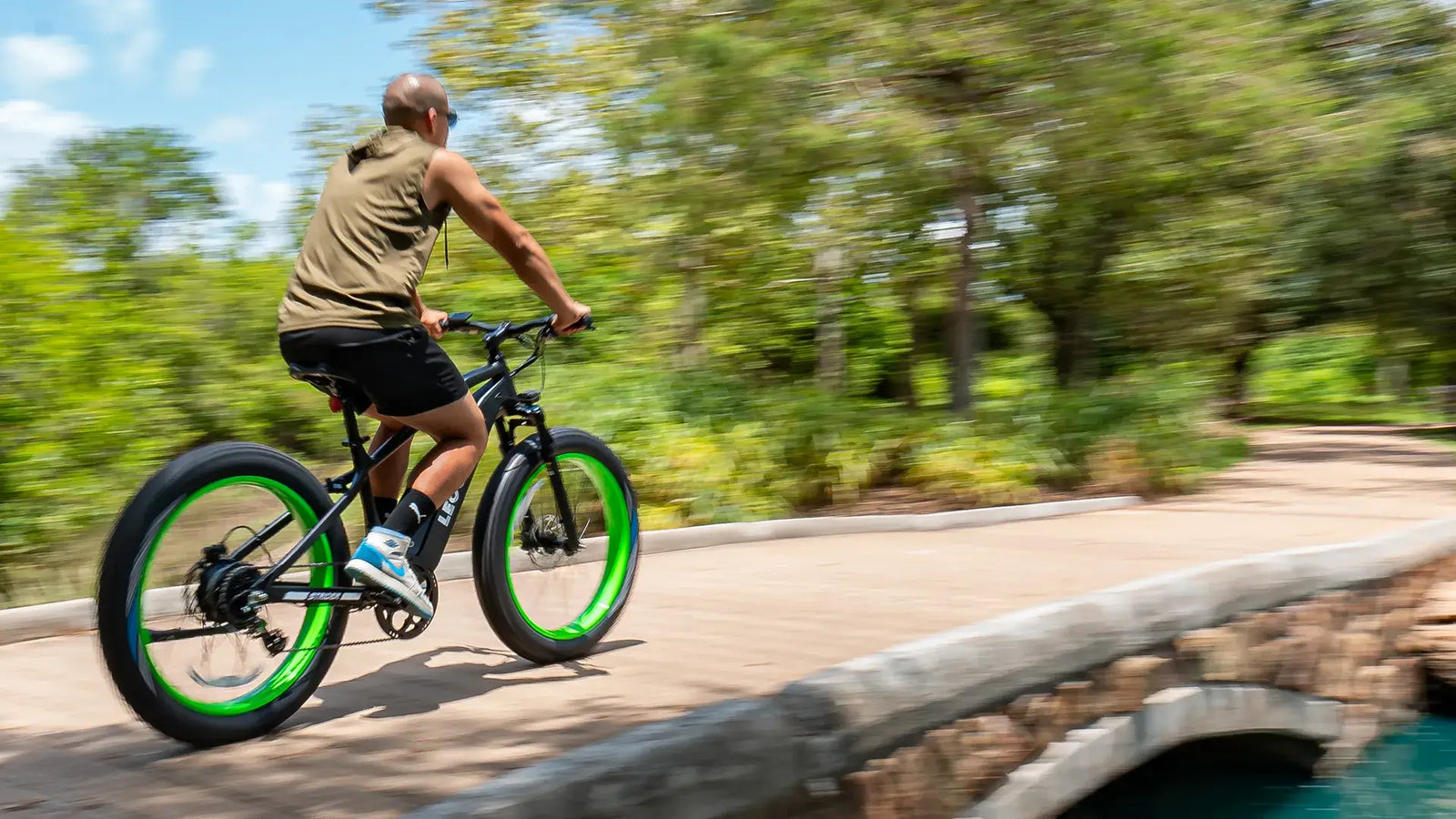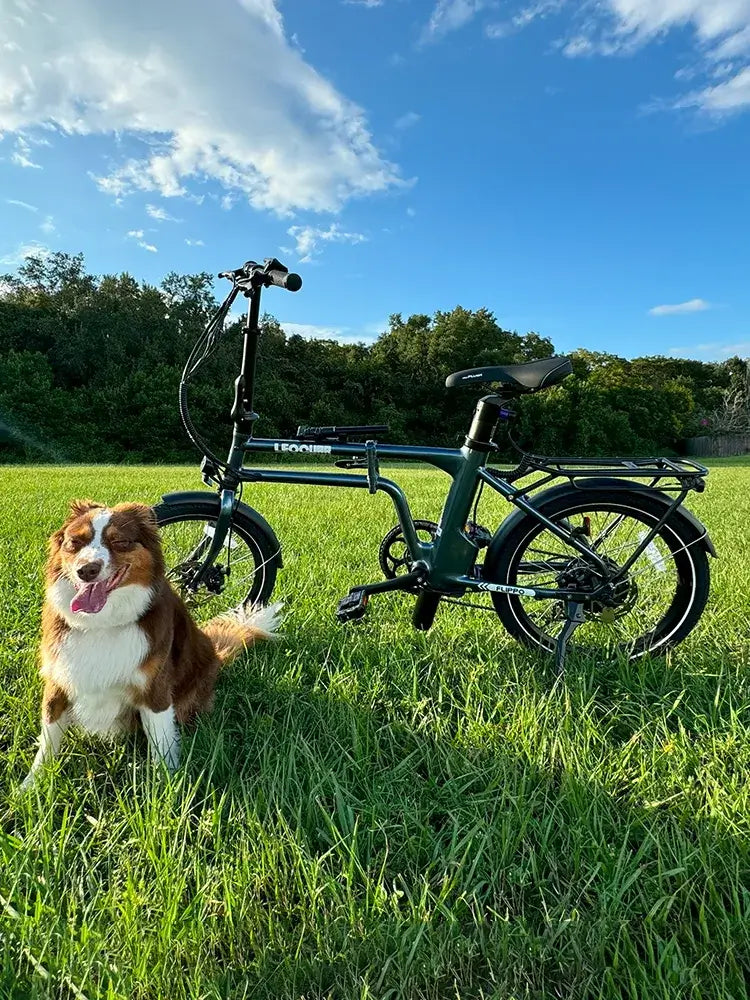
Electric Bike 100 Mile Range: Is It Real or Just Marketing Hype?
Quick Answer: Yes, it’s possible — but only under ideal conditions. Most “100-mile range” claims come from lab tests with light loads, low speeds, and consistent pedal assist. In real-world use, hills, wind, rider weight, and throttle use can significantly reduce that range. Think of 100 miles as the best-case scenario, not the typical result.
We want to give you the real facts here. Our goal is to explain what that "100-mile" number really means for your rides. An electric bike 100 mile range shows what might be possible, not what will definitely happen. How far you actually go depends on your bike's parts and how you ride it.
Manufacturers say their bikes go "up to" 100 miles under very specific conditions. This means a light rider on flat ground with no wind. The rider uses the lowest help setting and never stops. This creates a big difference between what companies claim and what happens on real rides. Your daily ride will be very different from these perfect test conditions.
Breaking Down the Numbers
You need to look past the advertised number to understand your real range. Think of your ebike battery like a car's gas tank. Hard driving in the city uses more fuel than smooth highway driving. The same rules apply to electric bikes.
The Big 5 Range Killers
These five things have the biggest impact on how far you can ride. Learning about them helps you predict your real-world range.
- Terrain and Elevation: Hills are the biggest battery drain. Going uphill takes much more energy than riding on flat paths. A route with lots of hills can cut your range in half.
- Rider Weight & Cargo: Moving more weight takes more energy. A 220-pound rider with 20 pounds of groceries will go less distance than a 150-pound rider with nothing extra.
- Tire Pressure & Type: Low tire pressure creates more contact with the road. This makes the motor work harder. Fat, bumpy tires also create more resistance than thin, smooth tires.
- Wind and Weather: Riding against strong wind is like going uphill the whole time. Cold weather also hurts battery performance because lithium batteries work poorly in low temperatures.
- Riding Style (The Human Factor): How you ride matters a lot. Do you use the throttle heavily or the highest help setting all the time? Or do you pedal steadily and use the motor to help your effort? Aggressive riding drains the battery much faster.
The Tech Side
Your bike's parts make up the other half of the range equation. These components form the base of any long-range ebike.
Battery Capacity (Watt-hours - Wh): This is the most important number. Watt-hours work like a gas tank's size. Higher Wh means more stored energy and more possible range. Long-range ebikes usually have batteries from 750Wh to over 1000Wh. Some expensive touring bikes use two batteries that can go over 1400Wh. This gives the biggest energy storage possible.
Motor Type & Efficiency (Hub vs. Mid-drive): Hub motors sit in the wheel center. Mid-drive motors sit at the bike's pedal area. Both can be powerful, but mid-drive motors usually work more efficiently, especially on hills. They use the bike's gears to help the motor work in its best range. This saves energy on different types of ground.
Torque Sensors vs. Cadence Sensors: This feature often gets overlooked but matters a lot. A cadence sensor just turns the motor on when you pedal. A torque sensor measures how hard you pedal and gives matching power. This smart assistance feels more natural and works much more efficiently. It often extends range by stopping the motor from giving unnecessary power.

Can a 100 Mile Range eBike Deliver in Real Life?
How do you turn a company's 100-mile claim into a number you can actually use? Let's do a "reality check" to see how our discussed factors affect a bike with a large 1000Wh battery.
From Lab to Pavement
This table shows how much the expected range can change when you move from perfect marketing conditions to real world riding.
| Scenario | Conditions | Realistic Range (from 1000Wh Battery) |
|---|---|---|
| The "Marketing" Ideal | 150 lb rider, no cargo. Perfectly flat, smooth pavement. No wind. Constant 12 mph speed on the lowest assist level (Eco mode). | 90 - 110 miles |
| The "Real World" Commute | 200 lb rider with a 15 lb backpack. Some rolling hills and city stop-and-go. Light headwind. Mixed use of low and medium assist levels. | 55 - 70 miles |
| The "Tough" Trail Ride | 220 lb rider with gear. Steep, sustained climbs on a gravel or dirt path. Moderate headwind. Frequent use of high assist and turbo modes. | 35 - 50 miles |
The same bike with the same full battery can lose more than 60% of its range. This happens just by changing the terrain and riding style. The electric bike 100 mile range depends completely on your personal situation.
Tips to Maximize Your Long Range Electric Bike
You have a lot of control over how much range you get. By using a few smart habits, you can get more miles from every charge. This works no matter what bike you own.
Pro Tips from Riders
- Ride Smarter, Not Harder: Your bike's assist levels control your range. Use the lowest assist level that feels comfortable for most of your ride. Think of the higher "Tour" or "Turbo" modes as temporary boosts for steep hills or quick acceleration.
- Be a Smooth Operator: Quick, jerky acceleration drains lots of power. Try to speed up slowly from stops and watch for red lights ahead. Coast to a stop instead of braking hard at the last second.
- Maintain Your Machine: This gives you the easiest improvement. Proper tire pressure is the cheapest way to gain range. Check your tires at least once a week and fill them to the PSI printed on the tire's side.
A clean, oiled chain also reduces friction and saves energy over long rides.
- Shift Gears Intelligently: Remember your bike has gears! Using the right gear for the terrain reduces strain on the motor. Shift to an easier gear before you start climbing hills so you can keep pedaling at a good speed.
- Lighten the Load: Before a long ride, ask if you really need everything in your bags. Every extra pound makes the motor use more energy to move it. This especially matters when going uphill.
- Plan Your Route: If maximum distance is your goal, use a mapping tool to find flatter routes. A route that avoids big hills might be a mile or two longer but will often use less battery than a shorter, hillier route.
How to Choose the Best 100 Mile eBike for You
If you want a bike that can deliver on the promise of an electric bike 100 mile range, you need specific features. With your new knowledge, you can now read a bike's specs like an expert.
The Long-Range Spec Sheet
- High-Capacity Battery: This is absolutely necessary. Look for a battery with at least 750Wh capacity. For a real shot at 100 miles in varied conditions, we recommend 1000Wh or more.
- Dual Battery Capability: This is the best solution for range worry. Some touring and cargo ebikes can mount a second battery. This effectively doubles your range.
- Efficient Mid-Drive Motor: Look for systems from trusted brands known for efficiency and reliability. Examples include Bosch, Shimano, Brose, or Yamaha. These motors deliver power smoothly and efficiently.
- A Torque Sensor: Do not compromise on this feature. A torque sensor shows a high-quality, efficient ebike system. It makes sure power gets delivered smartly and saves battery life.
- Well-Tuned Eco Mode: Test ride the bike if you can and pay attention to the lowest assist setting. A good "Eco" mode should give noticeable, helpful assistance without doing all the work. It should make pedaling on flat ground feel easy, not fast.
- Quality Battery Cells: The quality of the individual battery cells inside the pack matters. Brands that use cells from Samsung, LG, or Panasonic usually offer better performance and longer life.

The Final Verdict
An electric bike 100 mile range is not just marketing hype. It's a reachable goal, but one that comes with important conditions. This figure comes from perfect technology, terrain, and rider behavior working together.
Reaching that 100-mile mark needs the right machine. You need a big battery, an efficient mid-drive motor, and a torque sensor. But more than that, it needs the right rider. You must understand how to save energy, ride smoothly, and use the bike's power to help your own effort, not replace it.
With the knowledge from this guide, you can now look past the price and advertised range. You can judge any ebike based on the factors that really matter. Find the perfect machine to power your longest, most exciting adventures. The 100-mile ride is out there waiting for you.
Frequently Asked Questions
1. Q: Can any electric bike really go 100 miles on one charge?
A: Yes, some electric bikes can achieve 100 miles, but only under perfect conditions with large batteries (1000Wh+), lightweight riders, flat terrain, and low assist settings. Real-world conditions typically reduce this range by 30-60%.
2. Q: What battery size do I need for long-range riding?
A: For genuine long-range capability, look for at least 750Wh, though 1000Wh or more is recommended for consistent performance. Dual battery systems can exceed 1400Wh for maximum range potential.
3. Q: How much does rider weight affect ebike range?
A: Rider weight significantly impacts range. A 220-pound rider with cargo will get noticeably less distance than a 150-pound rider with no extra weight. Every additional pound requires more energy, especially when climbing hills.
4. Q: What's the difference between hub motors and mid-drive motors for range?
A: Mid-drive motors are generally more efficient for range because they use the bike's gears to operate in their optimal power range. This is especially true on hills and varied terrain compared to hub motors.
5. Q: How can I maximize my ebike's range on long rides?
A: Use the lowest comfortable assist level, maintain proper tire pressure, ride smoothly without sudden acceleration, shift gears appropriately for terrain, minimize cargo weight, and plan flatter routes when possible.
















































Leave a comment
Please note, comments must be approved before they are published.
This site is protected by hCaptcha and the hCaptcha Privacy Policy and Terms of Service apply.